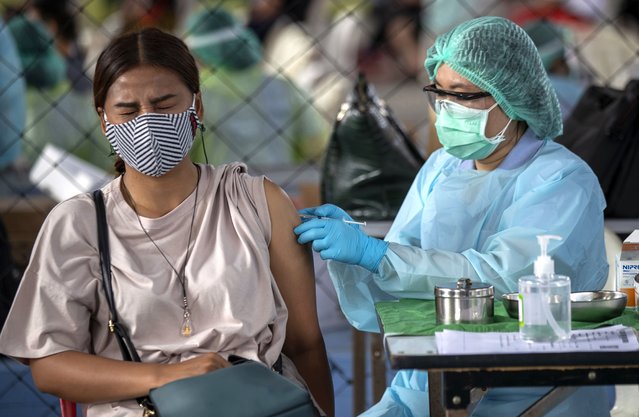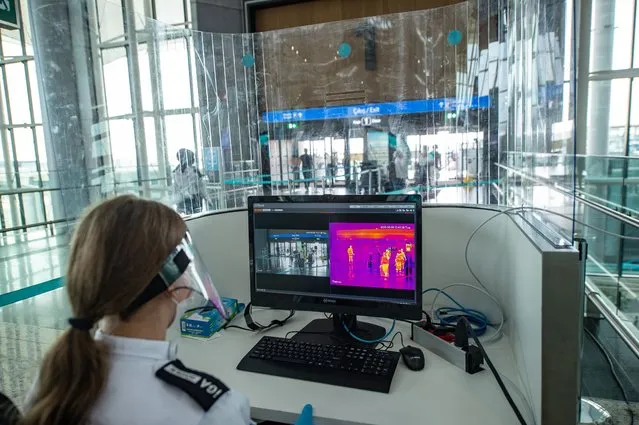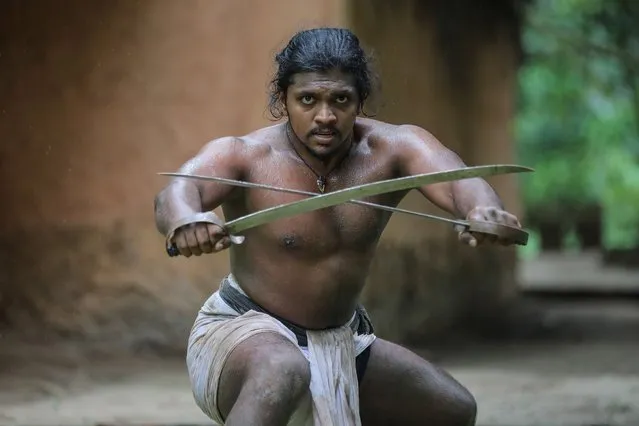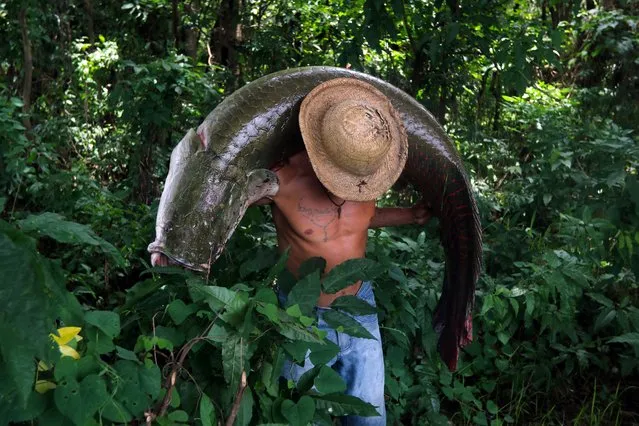
A health worker administers a dose of the Sinovac COVID-19 vaccine to a worker in a local entertainment venue area where a new cluster of COVID-19 infections were found in Bangkok, Thailand, Wednesday, April 7, 2021. Officials in Thailand’s capital have ordered a two-week closure of all entertainment venues in three districts to try to limit the spread of the coronavirus from nightspots there. (Photo by Sakchai Lalit/AP Photo)
08 Apr 2021 11:21:00,post received
0 comments







